Anywhere butter goes, brown butter goes better, enhancing the aroma and flavour of foods from savoury sauces to roasted veggies and chocolate syrup.
In this post, I'll show you how simple it is to make this one-ingredient recipe. It's really just about knowing all the stages that it goes through while cooking, so you're ready to take it off the heat at the right moment. I'll walk you through this with images and narrative, and there's even a time lapse video if you truly want to geek out.
Beware though, making brown butter is addictive. Forget its ultimate versatility, the scent alone will send you back for more. I wish the internet had scratch and sniff because this stuff smells like toffee — deep, delicious, nutty.
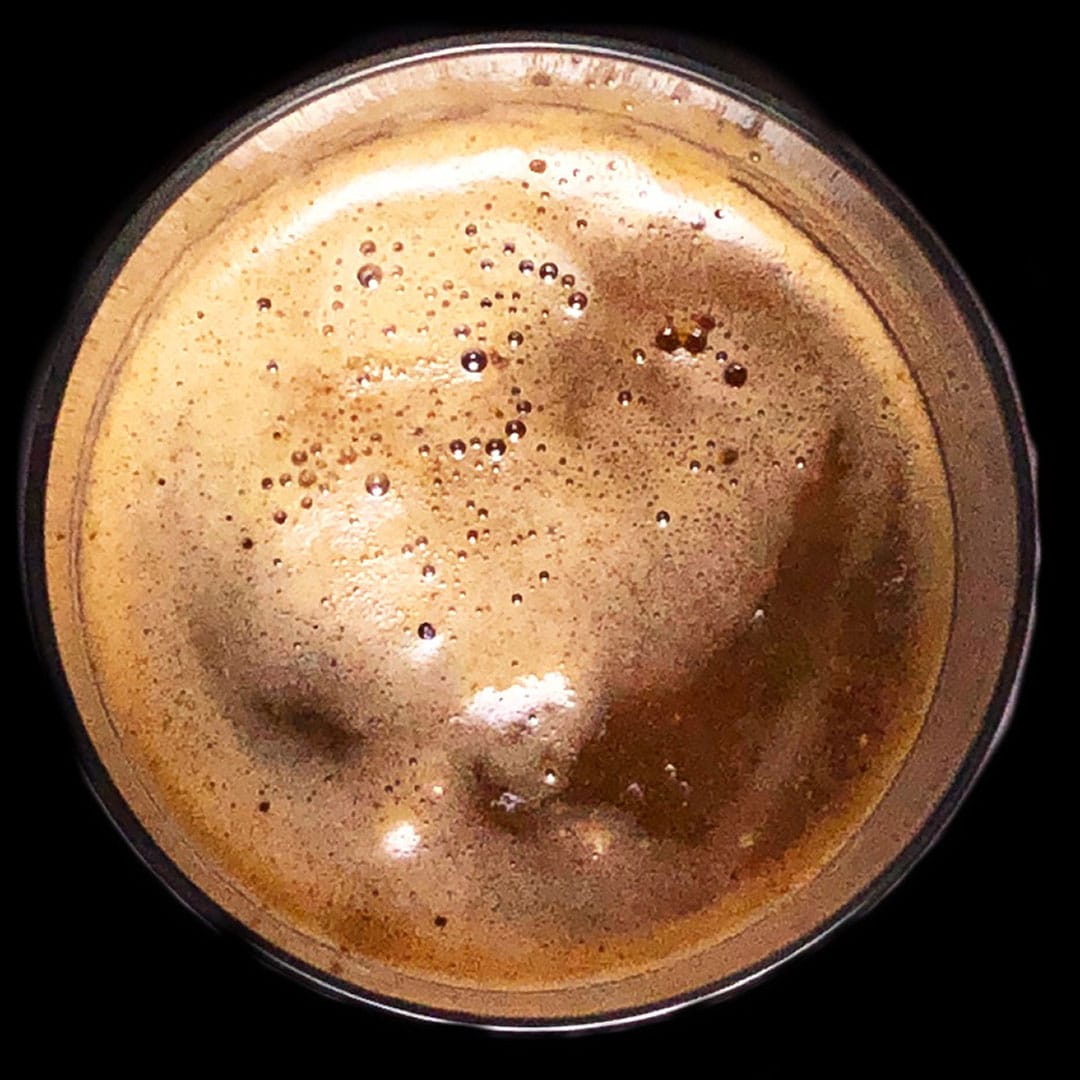
Brown Butter
This caramel-perfumed wonder is made possible with very little effort and time, and no fancy equipment, just a simple saucepan. The lowdown — brown butter is just regular butter that’s cooked until it releases water and the milk solids caramelize.
Making Brown Butter: The Four Stages
The graphic below depicts 1/2 pound (about 227 grams) of butter being browned. With that quantity, the whole amazing alchemical process takes about 18 minutes from start to finish. Note that while the graphic captures the highlights, there’s also a time lapse video that shows proportionally how long each of the cooking stages takes.
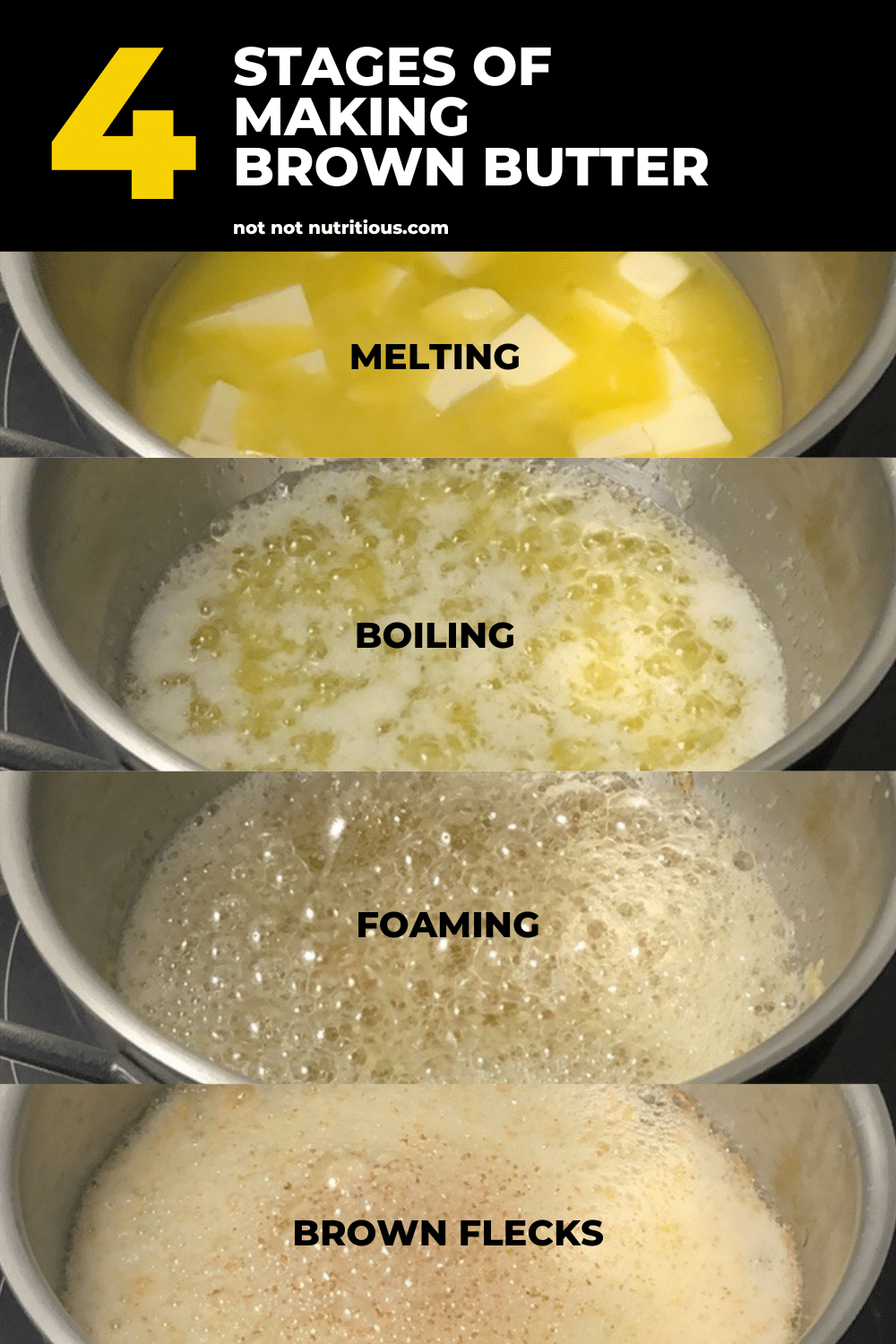
It might seem intimidating at first, but after you’ve made brown butter once while observing the stages it goes through, it’ll be something you can easily make while doing other things in the kitchen.
Visual Overview: Making Brown Butter
Ideally, use a light-coloured saucepan so it's easier to see the colour changes.
Times for each of the stages may vary depending on your stove. If toward the end of the cooking, you are worried about burning the butter, take it off the heat. I can tell you from experience, you'd rather have slightly-less -than brown butter than black or burnt butter.
What is Brown Butter Used For?
Brown butter elevates so many dishes. When in its liquid state, it’s perfect to drizzle over mashed potatoes or roasted vegetables, anything from Brussel sprouts to yams — really any vegetable that tastes good with regular butter is going to be even better drizzled with brown butter. Or use it to add depth and richness to soups, like this Roasted Butternut Squash Soup with brown sugar and brown butter.
It’s also a delicious addition to sauces, such as this Pineapple Brown Butter Teriyaki Sauce. The brown butter gives the sauce a lovely richness that works well against the acidic pineapple juice.
Brown butter also goes beautifully with herbs and spices. Pasta or gnocchi with brown butter and sage sauce is a classic pairing. Rosemary and thyme make great options, too, either for a pasta sauce, or to make a fragrant herbed brown butter. Or combine it with fresh ginger, as in my recipe for Roasted Rainbow Carrots with Ginger Brown Butter.
Another way to use brown butter is on your morning oatmeal — you can just drizzle some on. Or make a quick sweet and buttery sauce by combining 4 teaspoons brown butter with 4 tablespoons maple syrup over low heat.
Staying on the breakfast track, brown butter’s delicious with the turmeric and the warm spices featured in Moon Milk Farina.
Finally, it makes an incredible addition to this Brown Butter Chocolate Syrup, which is perfect for sundaes, mochas and chocolate drinks.
Let’s look at a few things to note when it comes specifically to baking with brown butter.
Tips for using brown butter in baking
To swap out brown butter for regular butter in baking, ensure that the brown butter is in the same state that the recipe calls for. Reheat it over low heat to make it liquid again if necessary.
At room temperature, brown butter will have a consistency close to peanut butter.
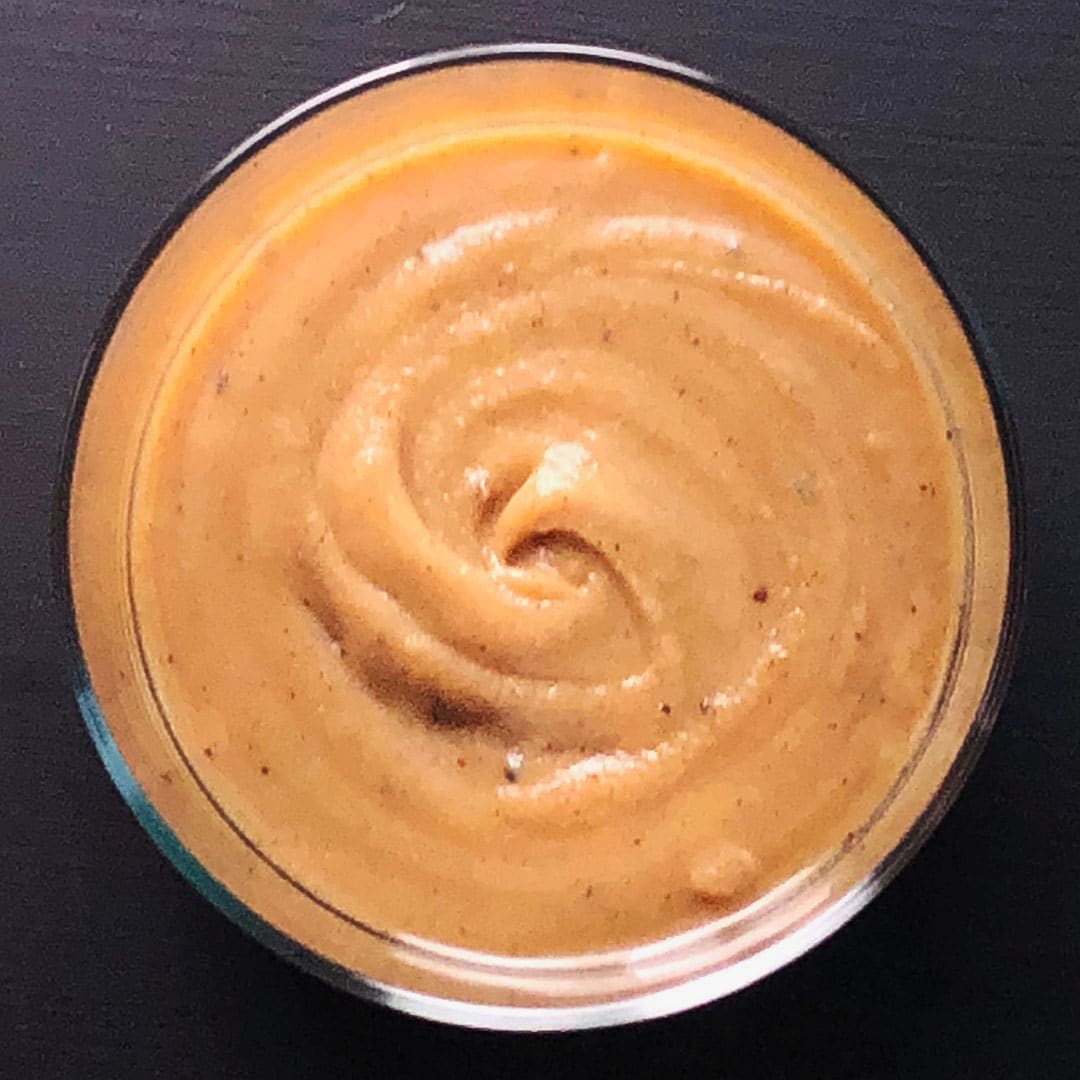
If the recipe calls for solid butter, refrigerate the brown butter overnight. Note that it will get a bit more solid, but it won’t ever return to the same solid state as butter.
Brown butter has less water in it than regular butter, so if you are swapping it out for regular butter add 1 tablespoon of extra liquid for each 1/4 cup of butter.
Time Lapse Video: Making Brown Butter
Tips for mixed groups
This recipe for brown butter is obviously not vegan, but the good news is that I’ve created a vegan version, so that you can make both versions if you're feeding a mixed crowd.
Related Recipes
Recipe Card
Brown Butter
Ingredients
- 227 grams unsalted butter (This is equivalent to half a pound. You can use salted butter in a pinch, but it may alter the flavour slightly.)
Instructions
- Cut the butter into even-sized cubes and add to a heavy-bottomed, light-coloured saucepan.
- Cook over medium heat, stirring every minute or so. The butter will go through various stages. (Note: Mine usually takes about 18 minutes or so, but your saucepan and stove will be different so your results may vary. Also, cooking less butter will take less time.)It will take a few minutes for the butter to melt.Then it will begin to boil and the water will cook off.Next the butter will start to foam as the milk solids brown. You will see the brown flecks and also smell a nutty aroma.Take the butter off the heat and pour it into a heatproof cup or bowl to prevent it cooking in the residual heat. Optionally, strain the sediment out during the transfer process. See the body of the blog post for detailed instructions and tips on how to use the butter alone and as an ingredient in recipes. Watch the time-lapse video to see a sped-up version of the cooking process. The video condenses 18 minutes of cooking into 60 seconds, while keeping the amount of time for each process proportional to the overall cook time. You'll notice that the butter melting and then boiling take about 30 seconds of the 60 second video, so proportionally about half of our 18 minute cook time. Around the 45 second mark, you'll see the first of the brown flecks appearing. This is about three-quarters, or 14 minutes in, to our total 18 minute cook time. Please keep in mind that your stove and pot will be different so your times may vary somewhat.
Notes
Storage
If you will be using your brown butter within a day or so, it's fine to keep it on the counter. Otherwise, just pop it in the fridge and it will last at least a couple of weeks. You can also wrap it well and freeze it.Total Yield and Nutritional Information
The yield for this recipe is 20 liquid tablespoons.The nutritional information is based on a serving size of 1 liquid tablespoon.Vegan Brown Butter?
Looking for vegan brown butter, see the recipe here.Summary of Tips
Please read the post for detailed tips, but here's a summary of key points:- Use unsalted butter if possible. Salted butter will work, but the flavour may be slightly different.
- Cut the butter into even-sized cubes to ensure it cooks evenly.
- Use a light-coloured saucepan so it's easier to see the colour of the butter changing.
- Stir or whisk the butter every minute or so to ensure even cooking of the milk solids.
- Watch the butter carefully. When it is foaming and brown flecks appear, it is time to take it off the heat. Pour the butter into a heatproof bowl or cup to stop it from further cooking. Optionally, strain out the sediment.
- Liquid brown butter all on its own makes a simple, one-ingredient sauce to drizzle on roasted vegetables or hot oatmeal.
- For baking, when using brown butter as a swap for regular butter, ensure it's in the same state (e.g., liquid versus solid) as the original recipe calls for.
- For baking, remember that brown butter has less water than regular butter. Therefore when swapping brown butter for regular butter in baking, add an extra 1 tablespoon of liquid for every 1/4 cup of butter (4 ounces).
- Come back often to check out my growing list of recipes that use brown butter. And I've got a recipe for vegan brown butter, too, so if you're cooking for a mixed group of vegans/vegetarians/omnivores you're covered here.

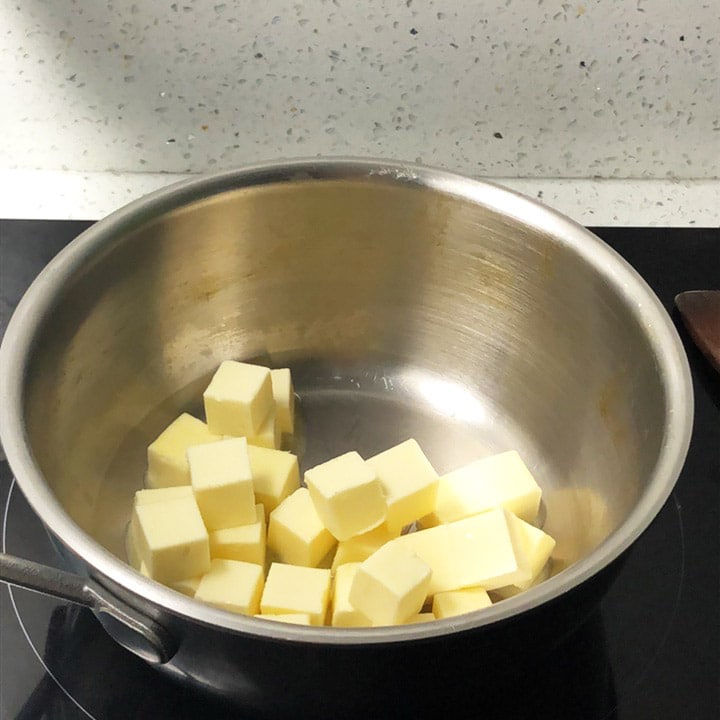
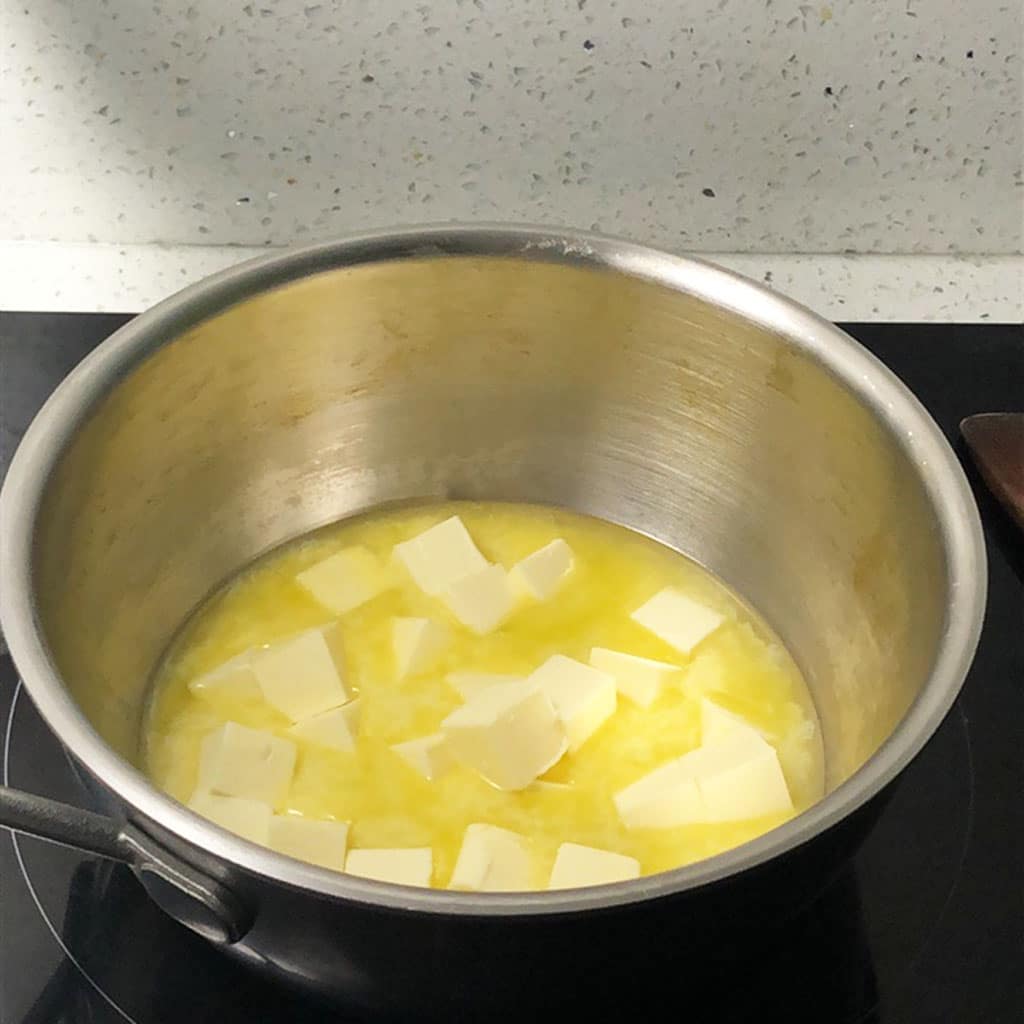
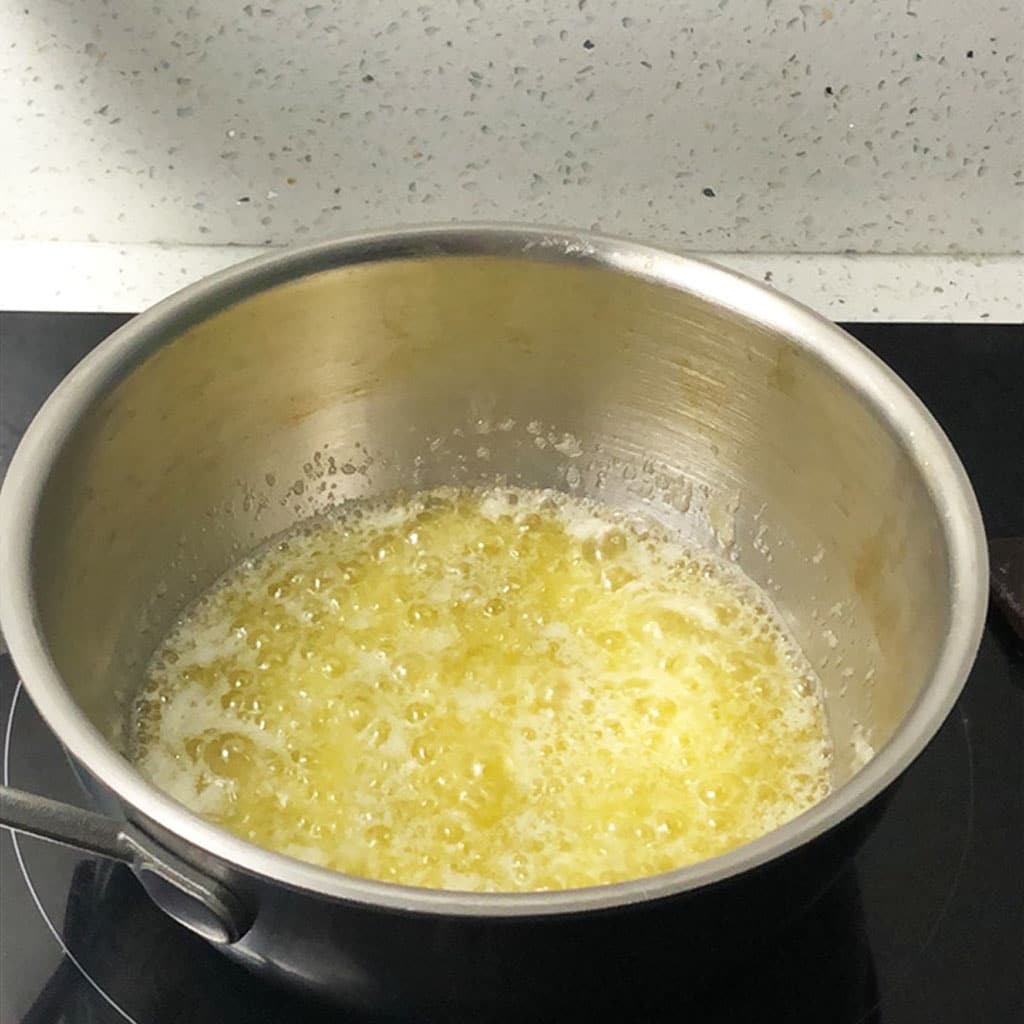
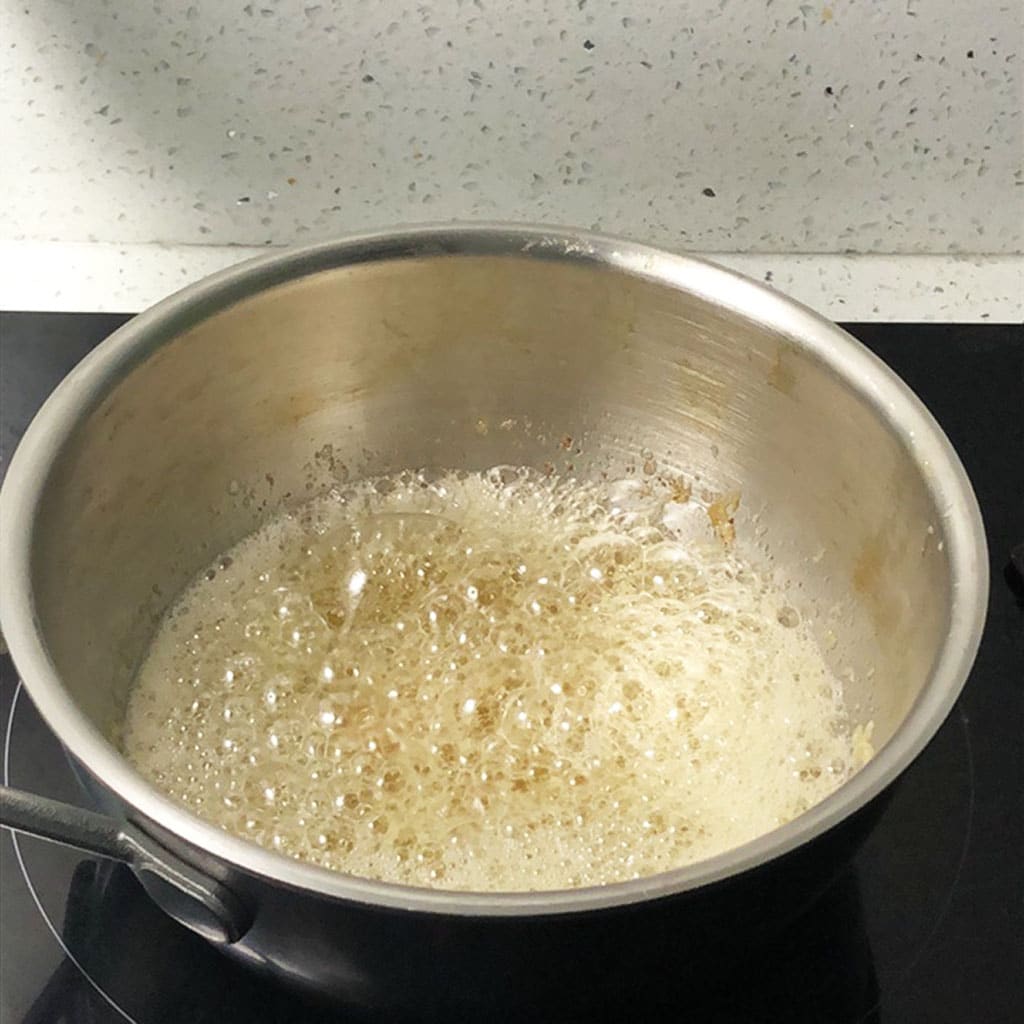
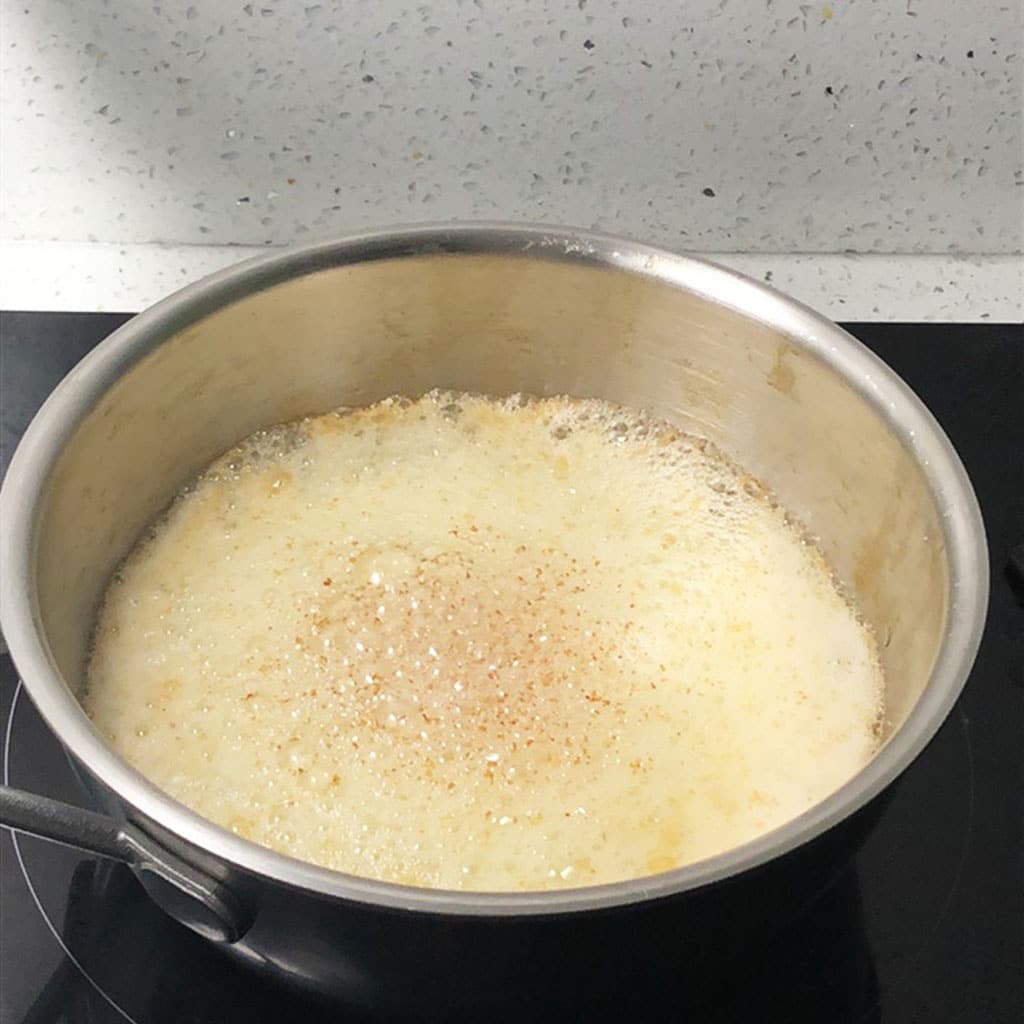
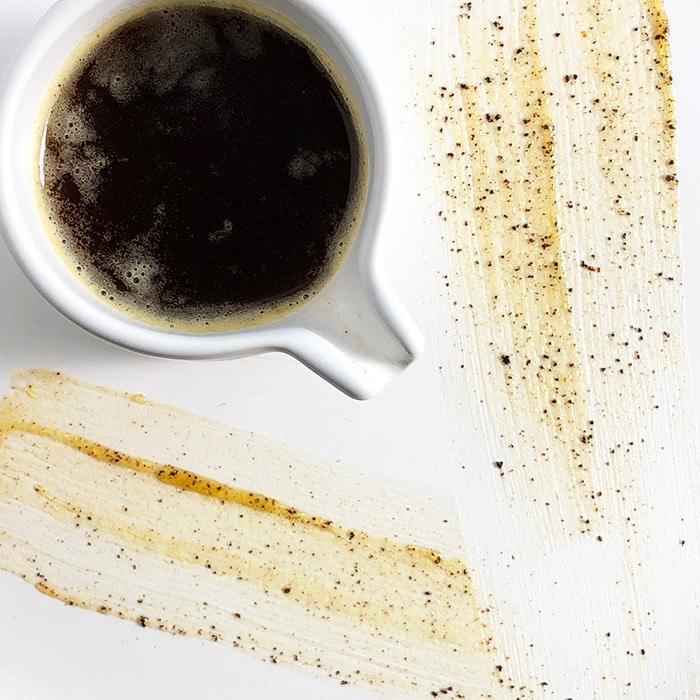
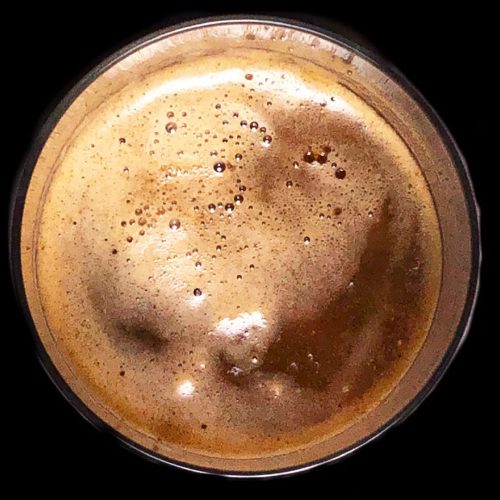
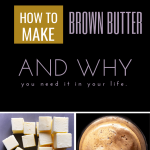
Awesome! I am going to give that a try! Brown butter mixed with parmesan might be great tossed on pasta or greens!
Hi Taryn – I think I’ll try that myself! – It sounds like a delicious combo!
Is my math correct – when browning butter, we lose about 20% of the starting weight?
So butter is essentially 20% water…
Hi Monika – yes, that sounds right. It will depend on the butter – standards vary in the world, but typically US commercial butters are about 80% fat, 16-17% water, and the rest is milk solids.
Is it possible to make browned “butter” but with GHEE as the starting point?
It’s my understanding that Ghee and brown butter are almost identical, except that Ghee has the browned milk solids strained out of it.